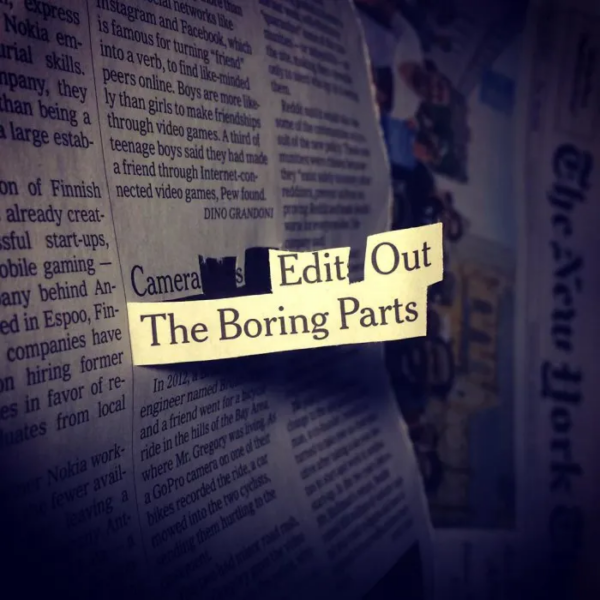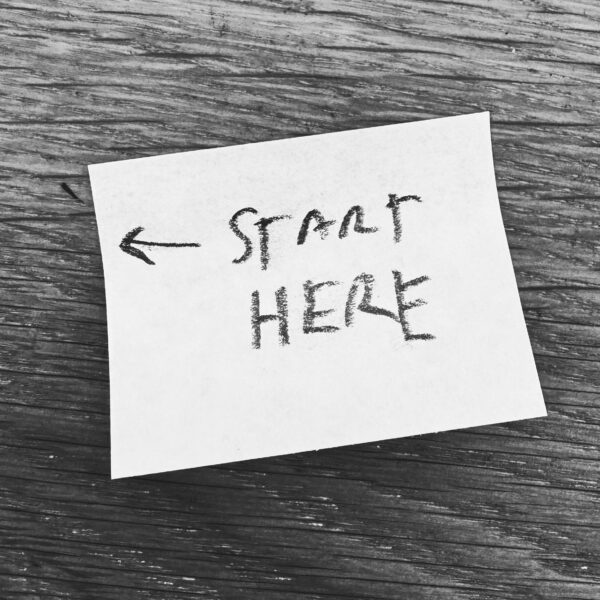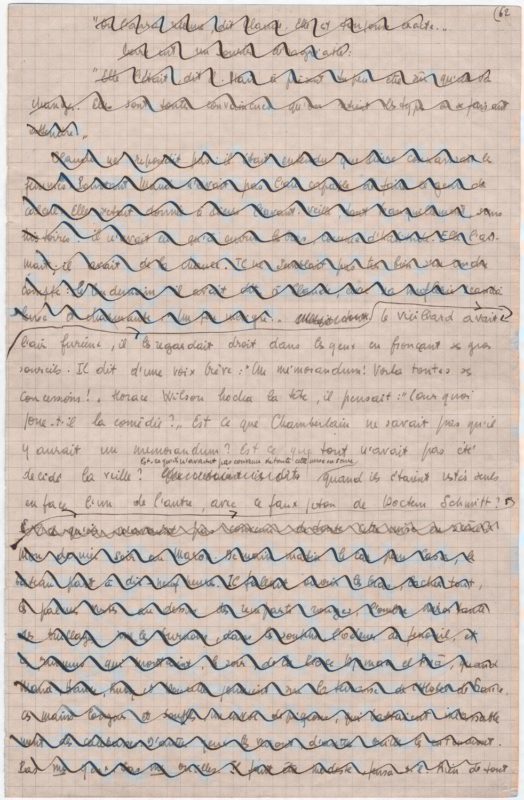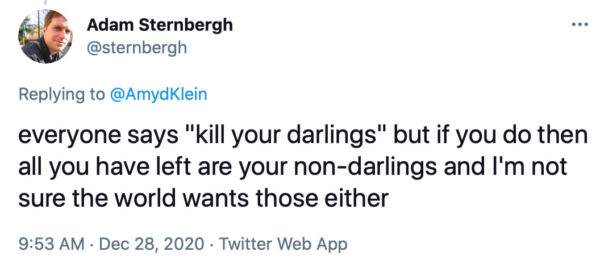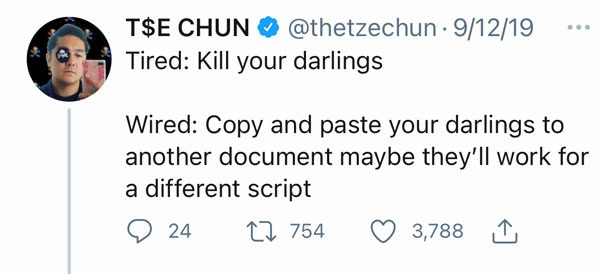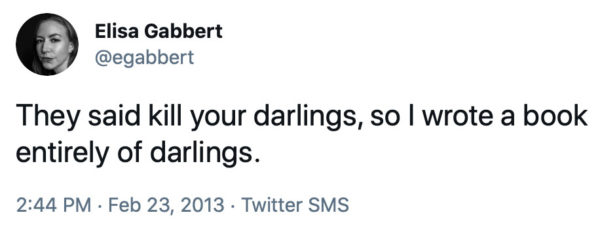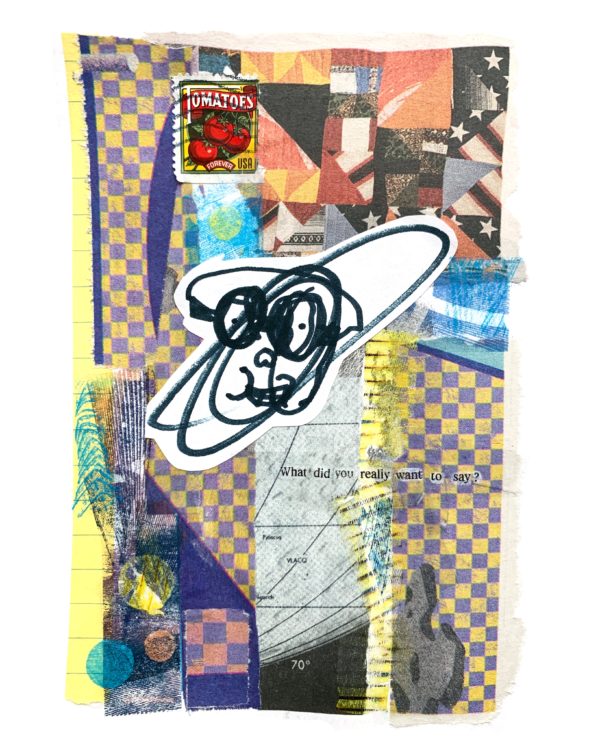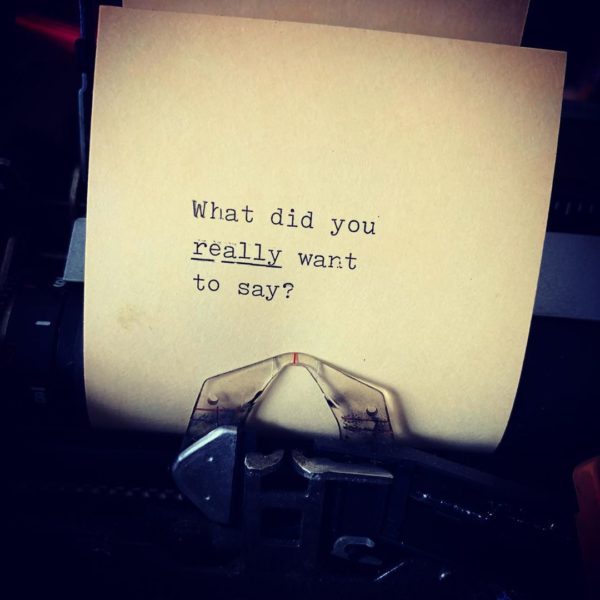Here’s how today’s newsletter about self-editing begins:
My trouble with self-editing is that I’m too good at it. I self-edit before I even write! I’m really good at talking myself out of writing. I’ve talked myself out of many more books than I’ve actually written. In my head, there’s too much editing going on too soon.
It was inspired by a video I posted to Instagram when I finished a draft of my next book, Don’t Call It Art:
View this post on Instagram
People often ask me how I know what I’m going to post to Instagram or on the blog or in the newsletter, and the answer is: I don’t know.
What I like to do is to have an idea, and whatever is the fastest way of expressing that idea, do that. See how people respond, and wonder whether there’s more to be said about it.
You can read the whole newsletter here.
